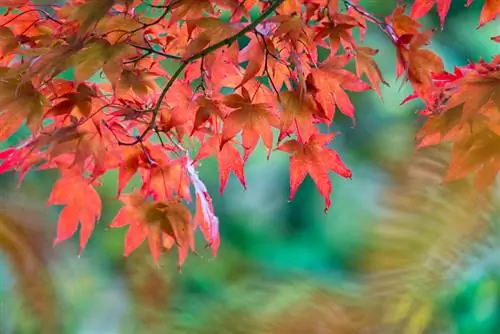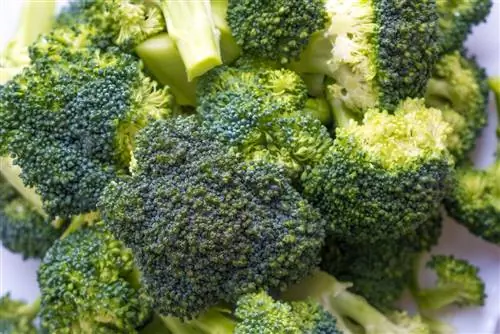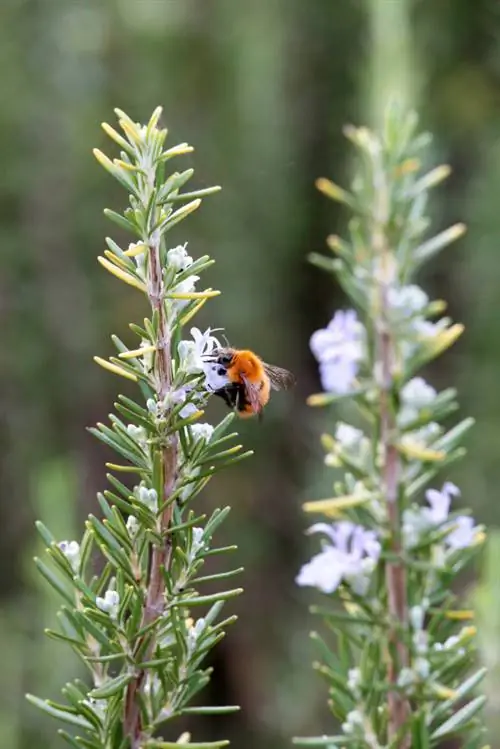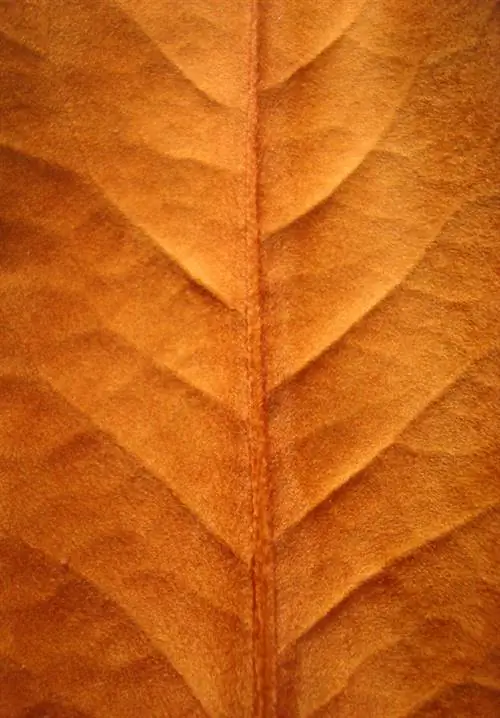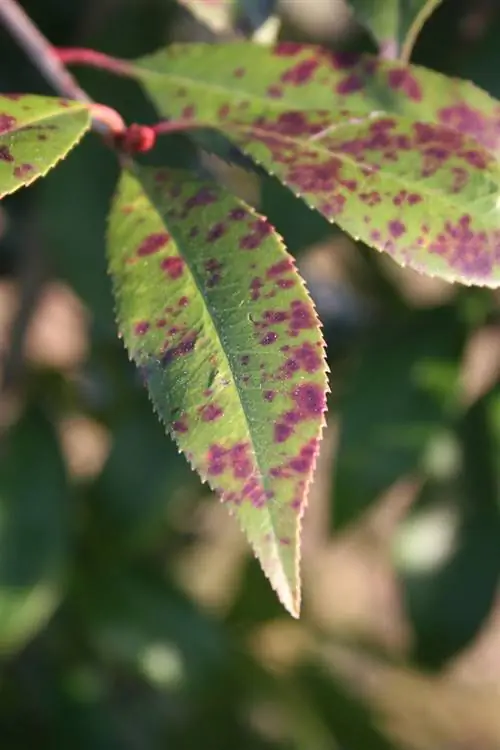- Author admin [email protected].
- Public 2023-12-16 16:46.
- Last modified 2025-01-23 11:20.
There are numerous species of maple for the garden or for keeping in containers, which are cultivated primarily because of their beautiful, red-colored foliage. The two best-known representatives are probably the red Japanese maple (Acer palmatum), which is available in numerous different varieties, and the red maple (Acer rubrum), which comes from North America. While the Japanese maple usually delights with red leaves all summer long, the red maple only shows its splendor of colors in autumn. However, greening can occur in both cases for different reasons.
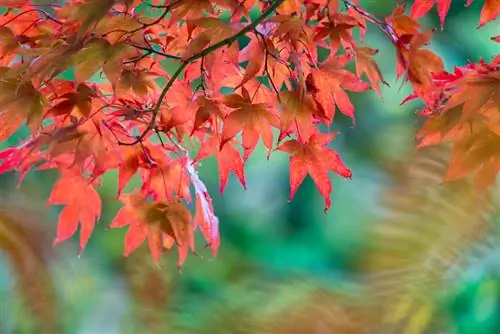
Why does a red maple tree turn green?
A red maple tree turns green if it has too little sun, an unsuitable location, incorrect soil pH or excessive nitrogen fertilization. To maintain the red line color, ensure sufficient sunlight, slightly acidic to neutral soil and moderate fertilization with organic substances.
Greening is normal for many Japanese maples
First of all: With many varieties of red Japanese maple, it is completely normal for the tree to only show red foliage when budding and in autumn. In summer the leaves are naturally green. These varieties include, among others: such popular variants as 'Kotohime' or 'Deshojo'. Only a few red Japanese maples show an intense red color throughout the entire growth period. Japanese maples that tend not to green up include:a. 'Atropurpureum', 'Fireglow', 'Bloodgood' as well as various Dissectum varieties (which also includes the popular 'Garnet').
There are many possible causes for greening
On the other hand, greening can of course also have various causes, which can usually be found in an unsuitable location, too much or too little sunlight and / or incorrect fertilization. These lead to premature greening in the Japanese red maple as well as a lack of autumn color in the Canadian red maple.
Inappropriate location
A lack or insufficient amount of sunlight is usually responsible for at least weak or even complete absence of autumn color. Basically, the rule applies to maples: the more the sun shines from the sky, the more intensely the color of the foliage becomes. However, this is by no means a general rule, as some species of maple prefer a partially shaded location and react to excessively direct sunlight by turning green.
Incorrect pH value in the soil
Another reason for the leaves turning green is the incorrect pH value. Maples prefer a slightly acidic to neutral substrate and turn green as soon as it turns alkaline. In such a case, it helps to improve the soil with acidic rhododendron soil.
High nitrogen fertilization
Last but not least, overly intensive fertilization - especially with nitrogen - causes the foliage to fade. Maples, no matter what type or variety, should only be fed very moderately and preferably with organic fertilizers.
Tip
Unfortunately, greening can also occur naturally in older specimens - younger, red-leaved maples are often more intense in color and sometimes lose it over the years.

